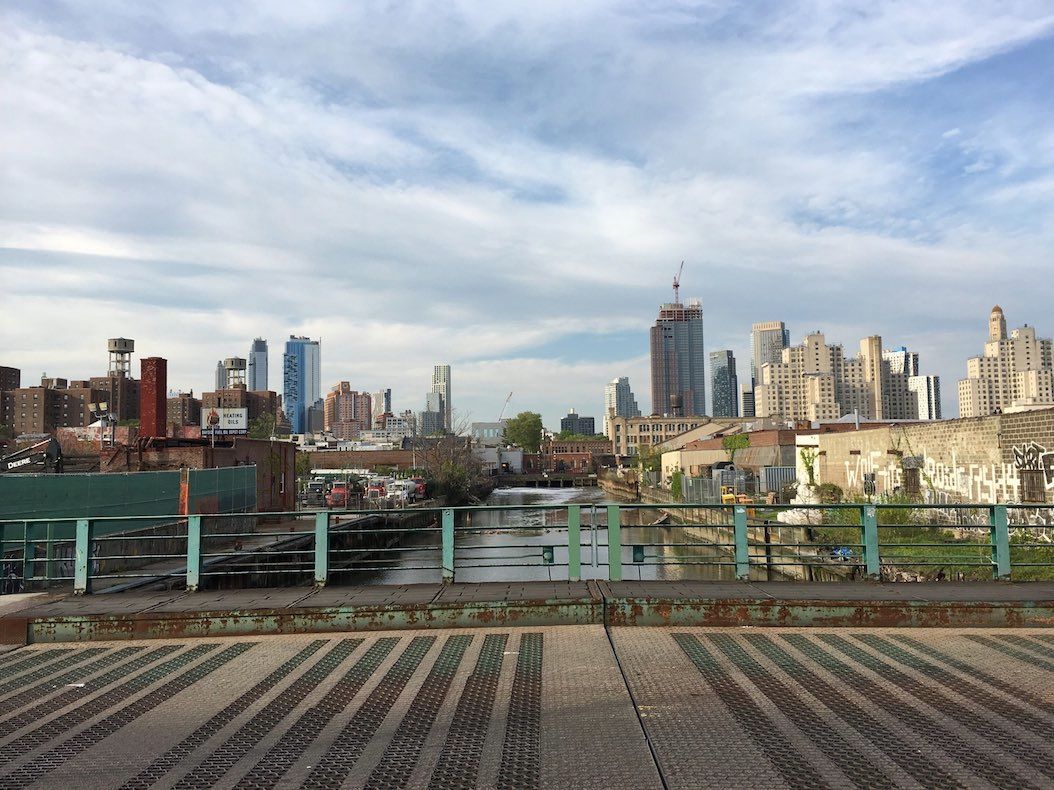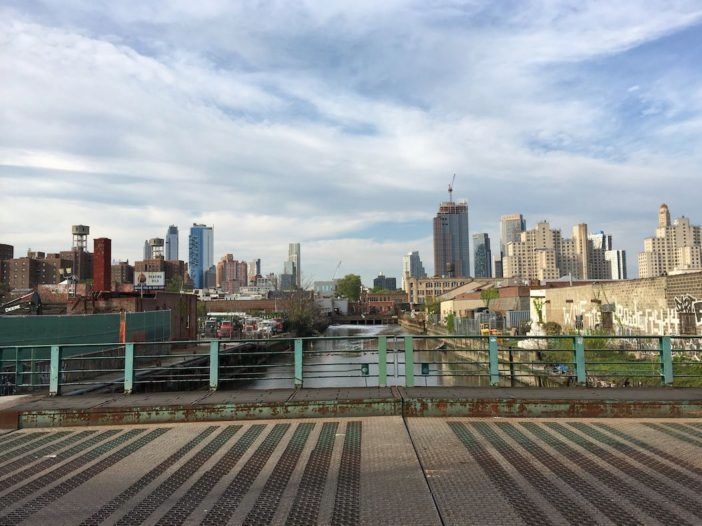UPDATE: DOT Submits ‘Fixed Bridge’ Plan To Coast Guard; Drawbridge Option For Aging Union Street Crossing Still On Table


UPDATE, Monday, June 20 at 5pm: In further discussion between the Park Slope Stoop and the Department of Transportation, a DOT spokesperson now says a drawbridge option for the new Union Street Bridge is still a possibility. Our article reflects this new information provided to us.
The Department of Transportation plans to submit an application to the Coast Guard for conversion to a fixed bridge, the Park Slope Stoop has learned. According to a DOT spokesperson, they have begun the process of a Navigational Impact Study (NIS), which is expected by the end of 2016.
The DOT presented plans for the bridge to the CB6 Transportation/Public Safety Committee on April 21, and a spokesperson says the community’s input during that meeting was taken into consideration.
It is widely agreed upon that a replacement of the 111-year-old Union Street Bridge is necessary. “The bridge is in really bad shape,” said Joannene Kidder of the DOT’s Division of Bridges. “Structurally, the bridge has got a lot of temporary fixes.”
After the DOT submits the NIS, the Coast Guard will then initiate a public review process and ultimately render a final determination of the clearance requirement for marine traffic, according to a spokesperson.
Once the Coast Guard has made their determination, the DOT will then decide if a fixed bridge can be constructed that provides the required clearance within the confines of the existing conditions and constraints at the site, explains a DOT spokesperson. If not, says a spokesperson, the agency will revert to a “movable” or “drawbridge” design.
After the determination by the Coast Guard, DOT will then determine whether a fixed bridge can be constructed at Union Street that provides the required clearance within the confines of the existing conditions / constraints at the site. If not, the agency will revert to a movable bridge design, as explained by a DOT spokesperson.
The height of the bridge is extremely important, because it will determine the height of vessel which can pass under the new structure. The EPA — which is in charge of cleaning up the Superfund site — would need to plan alternatives in order to do the removal should they be unable to use barges to remove the sludge.
The opinions about the choice of a fixed versus draw bridge vary significantly, however, the CB6 Transportation Committee voted 6-3 in preliminary favor of the fixed bridge option, according to Curbed New York.
The meaning of “preliminary vote” has become a subject of discussion. According to Eric McClure, co-chair of the CB6 Transportation Committee, “[i]t was purely a show of hands to see who, in the abstract, favored a fixed bridge and who favored a drawbridge. A fixed bridge has advantages for road/sidewalk uses; a drawbridge, obviously, permits navigation by larger vessels.” (More of McClure’s response are available in the comments section at the end of this article.)
While not a vote from the transportation or general committee, a spokesperson for the DOT confirms they did take this “show of hands” into consideration.
“I think it should be a working bridge. I think that’s very important,” said Gowanus Alliance President Paul Basile. “I think they’re going to have to access that part of the canal, not only for the cleanup but for future maintenance.”
Community activists had not been alerted about the process was moving forward. Gowanus Canal Conservancy Executive Director Andrea Parker was unaware of next steps for the bridge before the Stoop learned about the DOT’s plans.
Author, journalist, and community activist Joseph Alexiou has been strongly in favor of a drawbridge option. “One reason is that removing a functional drawbridge could impact potential future use of shipping in the canal,” he told us. “For example, many in the community would prefer that the toxic waste being removed from the Gowanus and environs be shipped out by barge, and not via trucks through residential neighborhoods. This would be impossible without the bridge. There may be other functional needs for a drawbridge that we have yet to foresee, from recreation to infrastructure.”
According to DNAinfo, Kidder believes “[i]f DOT pursued the fixed bridge option, the city would have to cover the difference in cost between having the dredged sludge trucked out of the neighborhood instead of ferried out on barges.”
A fixed bridge could involve the construction of its mooring on private land, “affecting the owners’ access to the waterfront and potentially devaluing their properties,” writes Brooklyn Paper. “Kidder said the city will compensate them, but wouldn’t be able to say by how much until an external company does a lengthy property appraisal.”
Kidder approximates the bridge replacement will begin construction late 2018 or 2019. The EPA estimates dredging of the canal to begin in 2019. It’s unclear as of yet if the replacement bridge construction will delay the dredging. That said, the DOT believes the fixed bridge — of selected — would take less time to build than a drawbridge.
But the question of whether funds will be spent wisely is still an issue. “The amount of money that’s going to be spent on a bridge that ultimately may not even be functional or moveable, I think is short-sighted and not giving the community the best value,” said Basile, the Gowanus Alliance President.
The DOT says there are further steps to be take, and the process will move forward once the Coast Guard application process is complete.